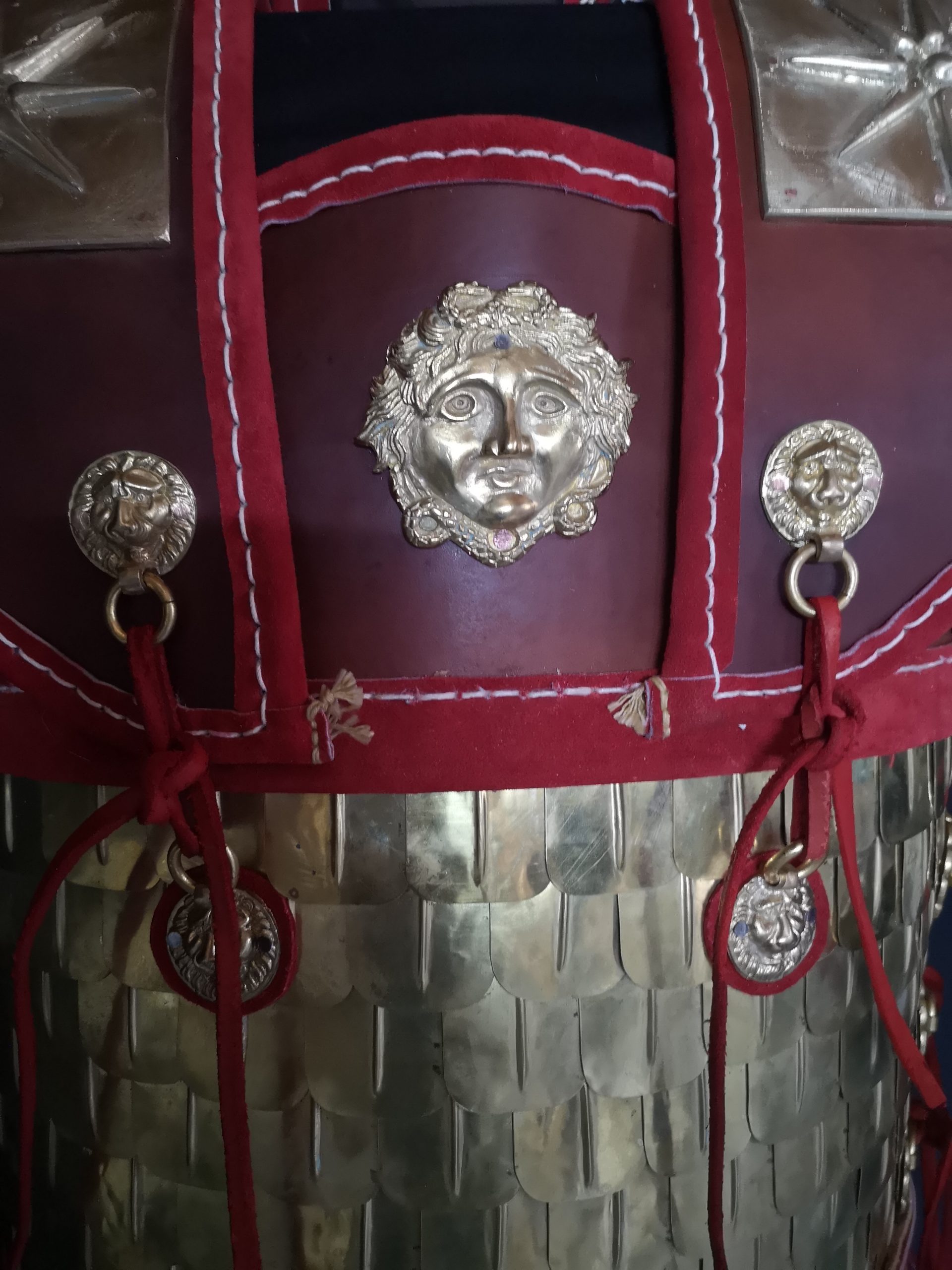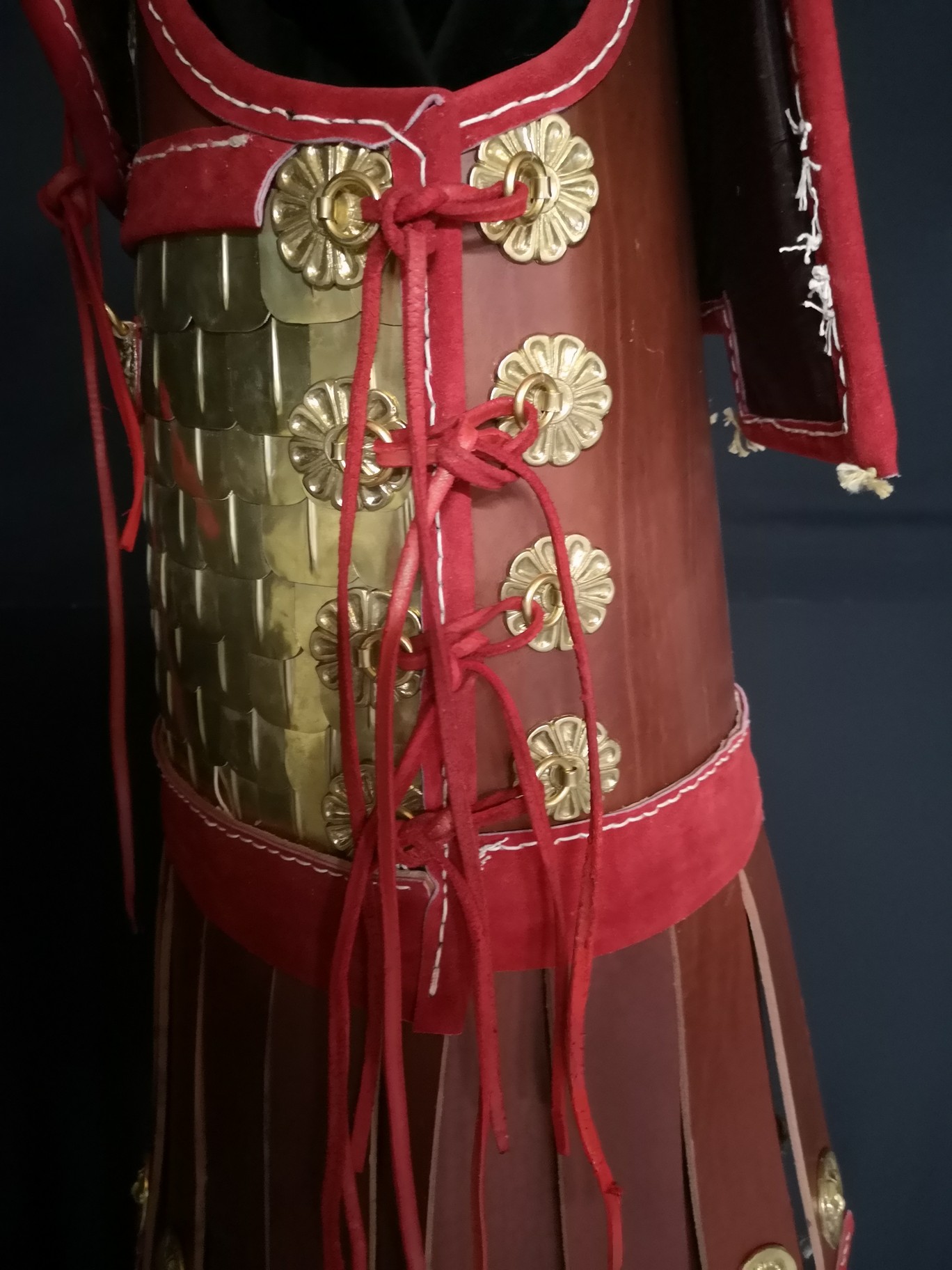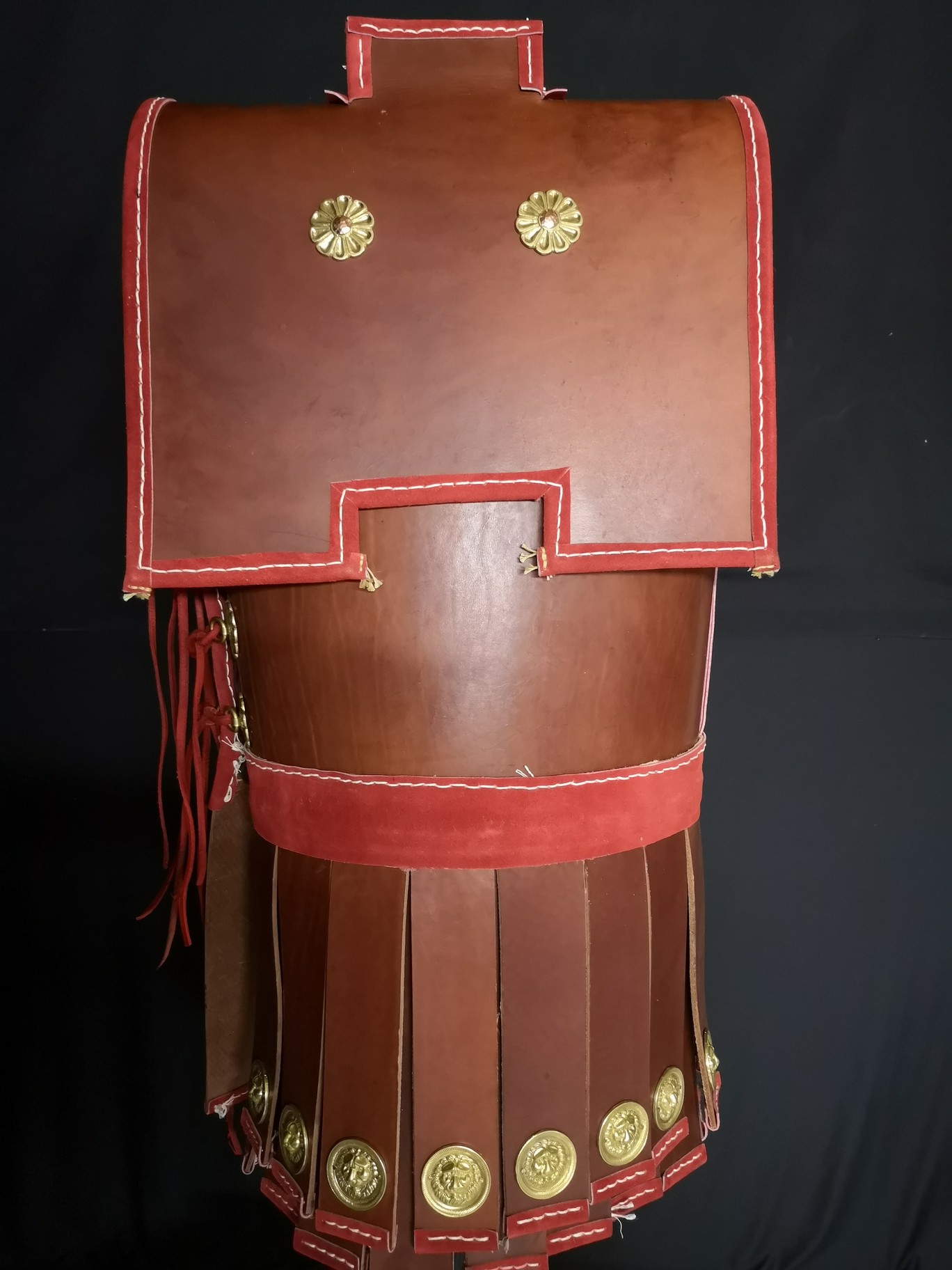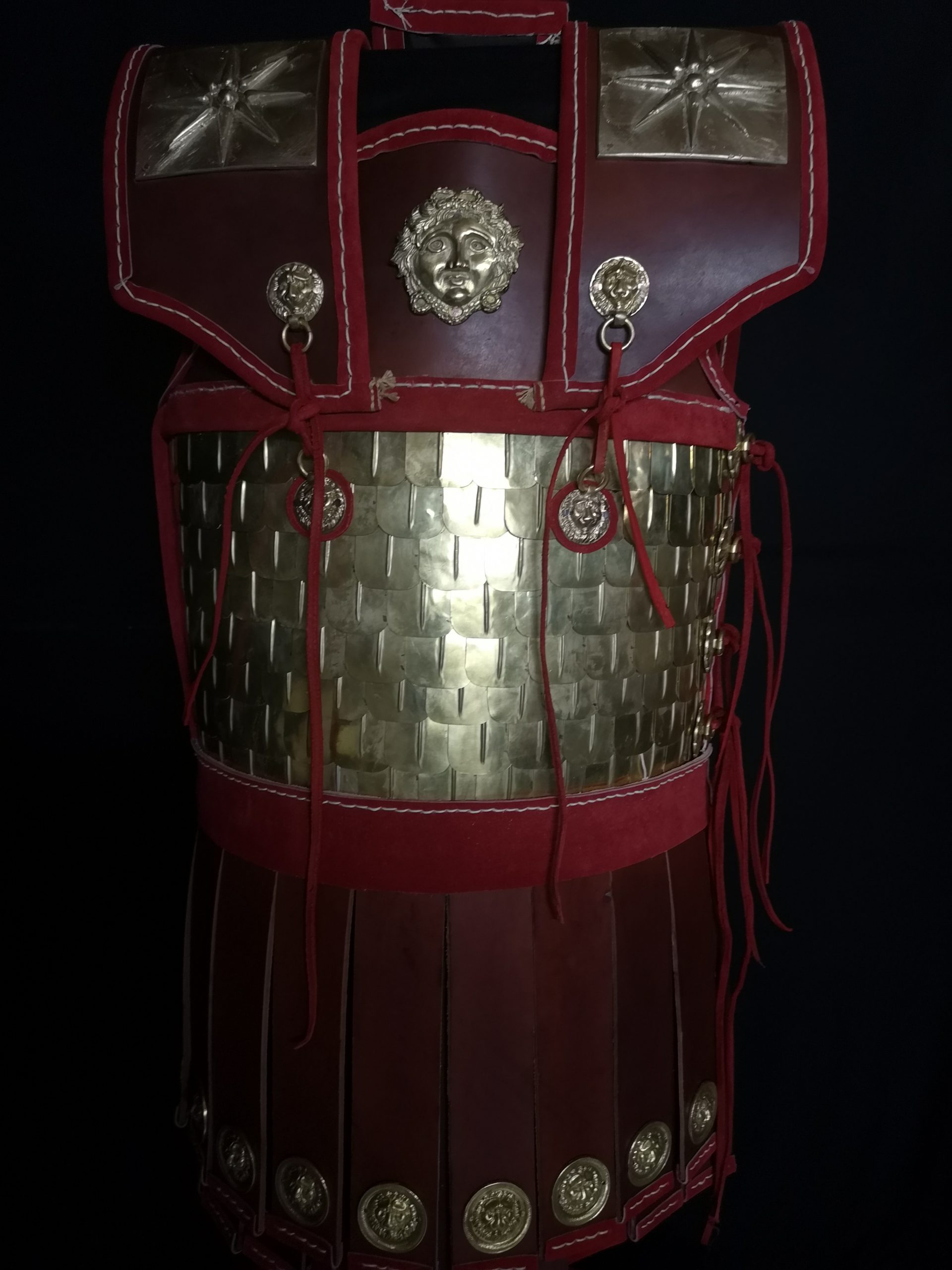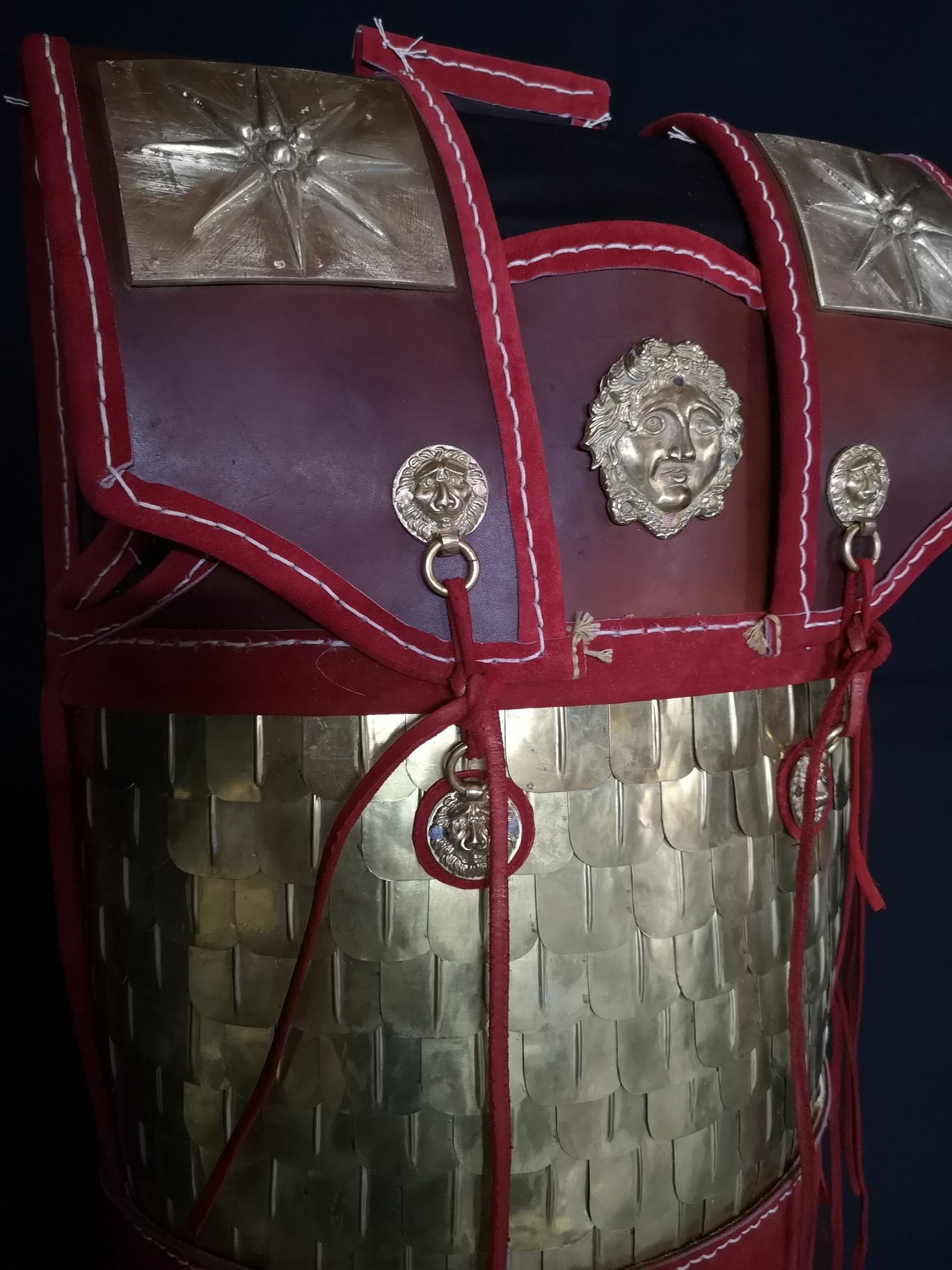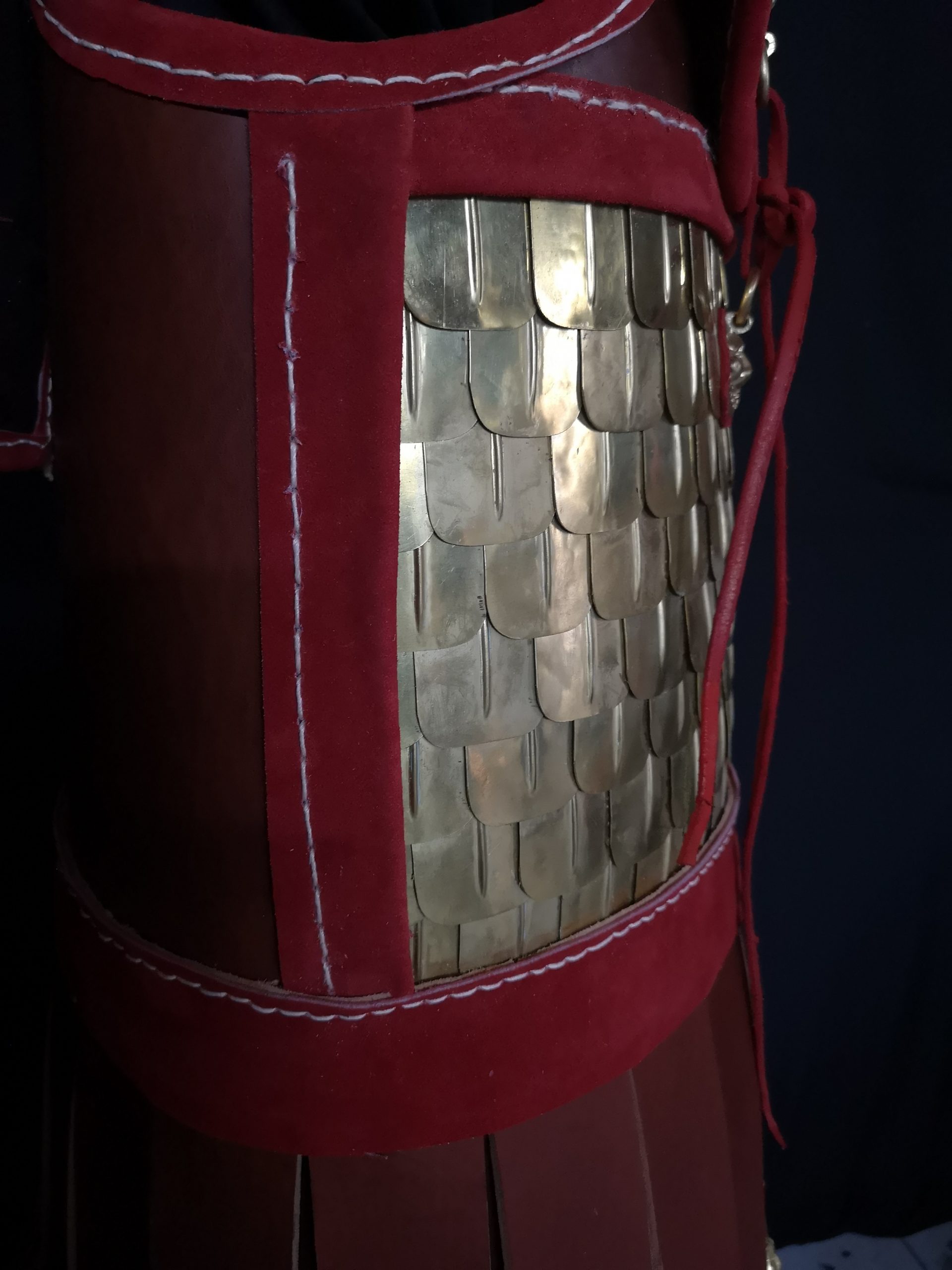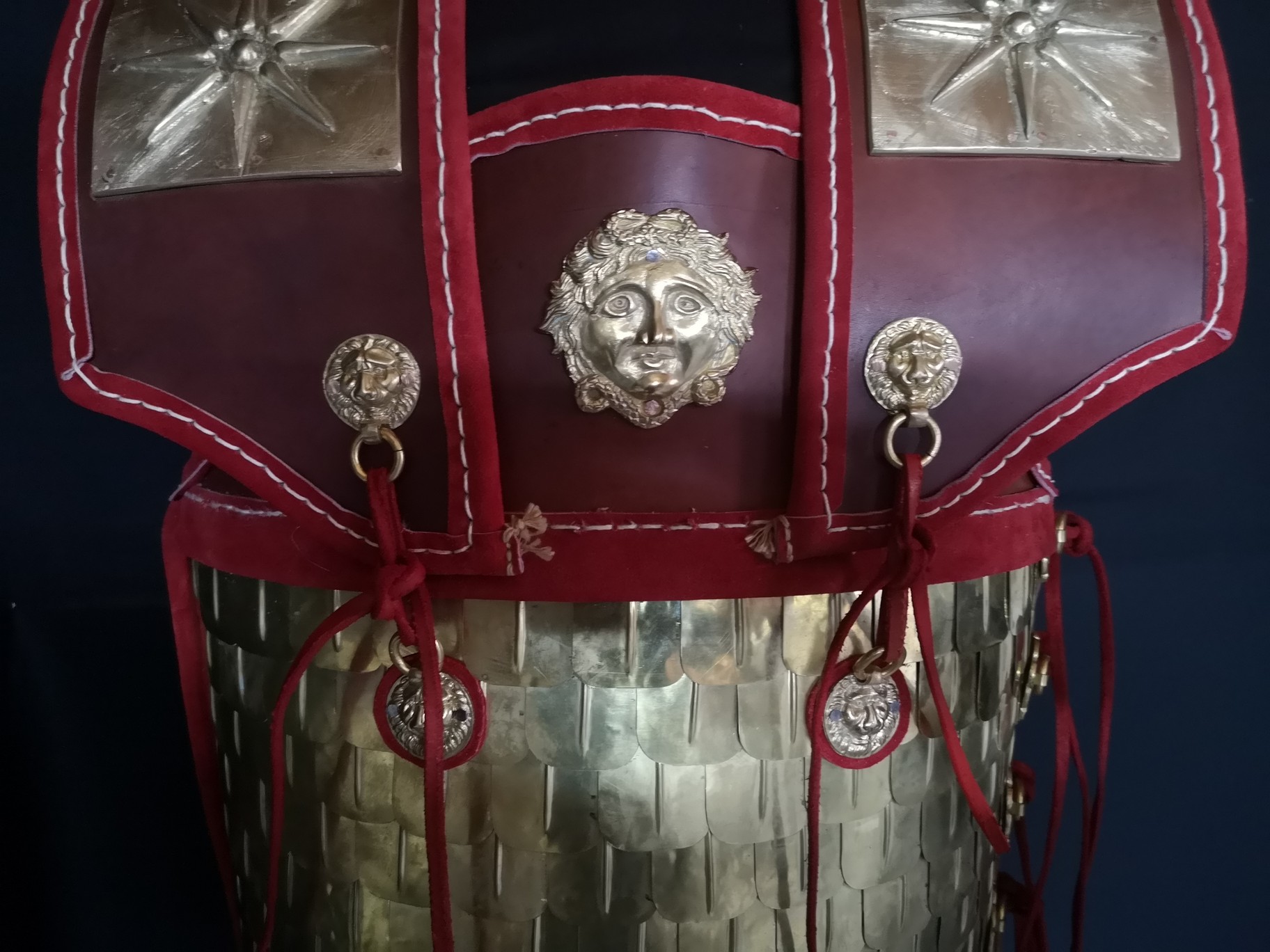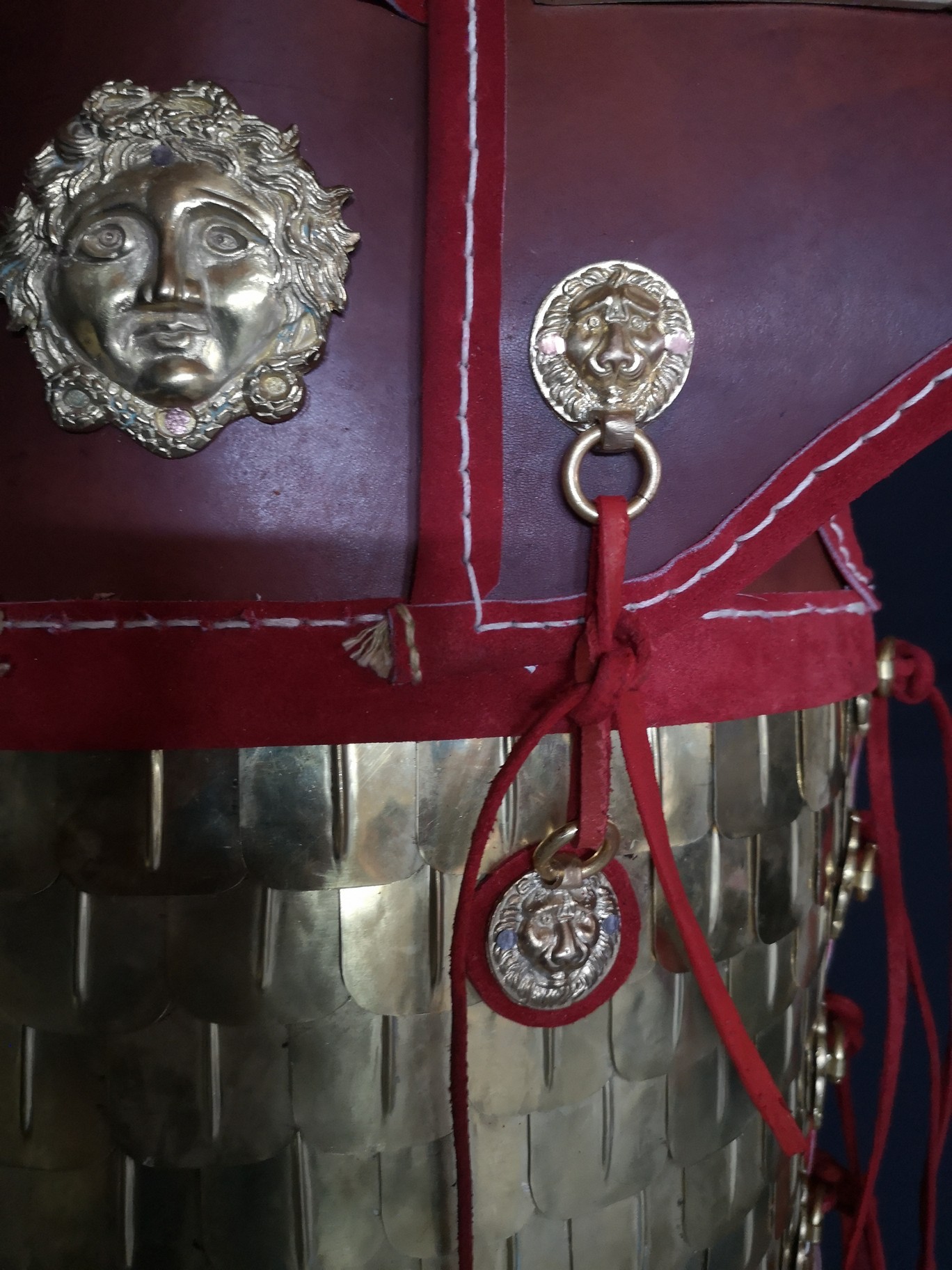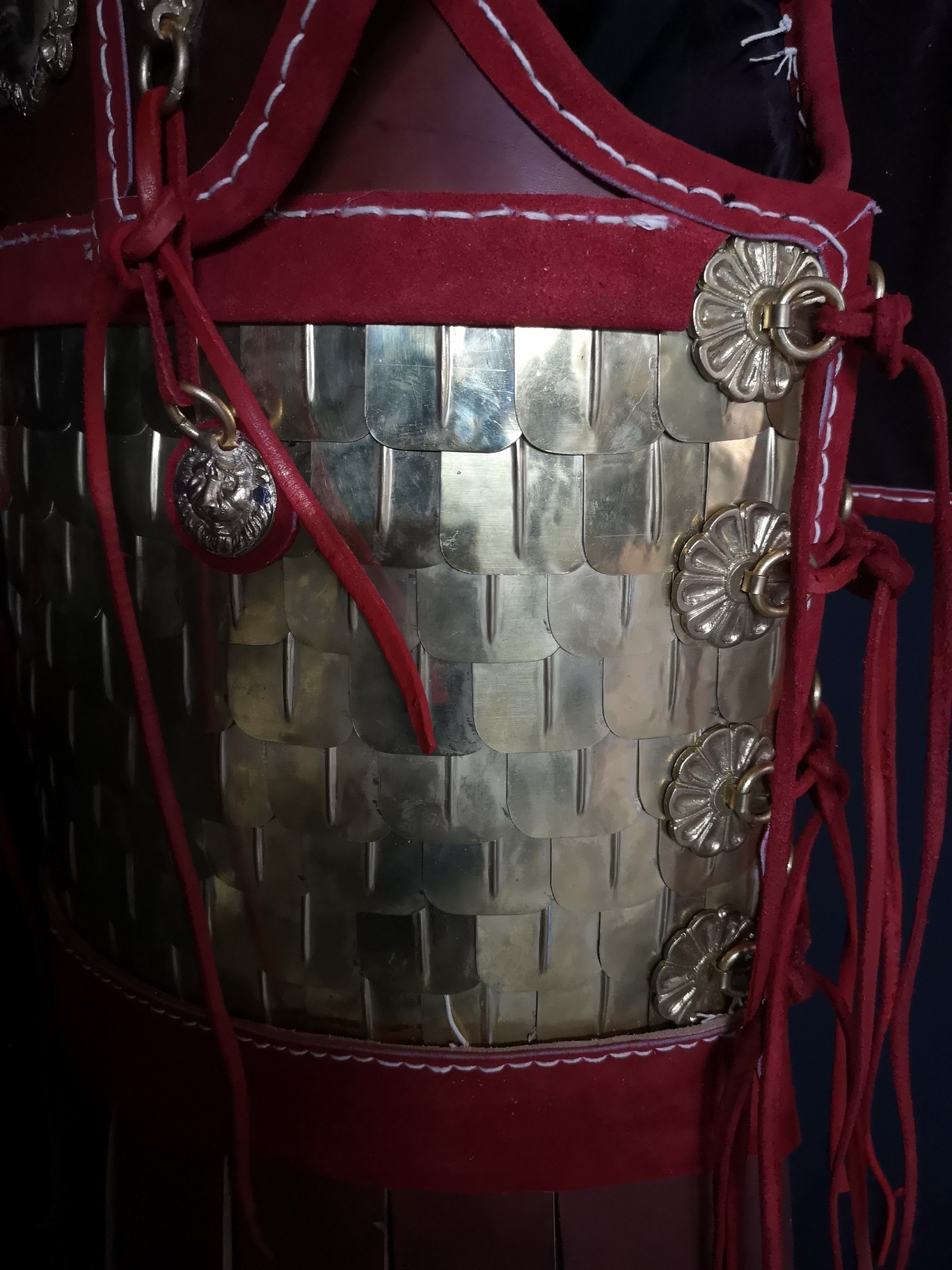Ancient Greek Armors
“Dimosthene’s” leather thorax.
5th -1th century BC
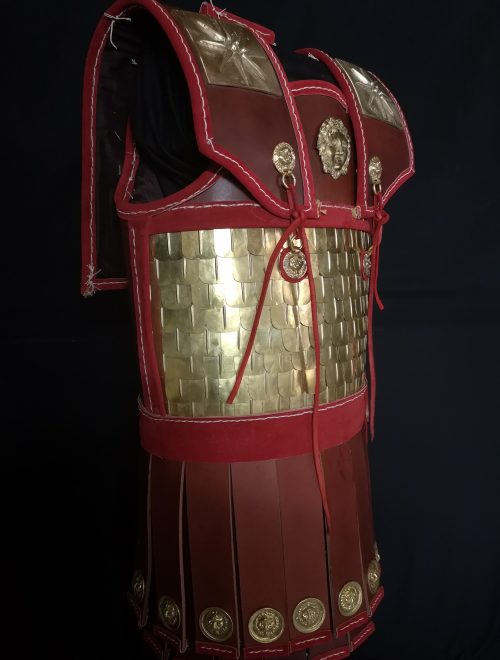
Τhe armor it follows the generic outline of a Linothorax torso, it being consisted by torso, pteryges (πτέρυγες) and epomides (επωμίδες) constructed exclusively from thick waxed leather. The epomides and the torso parts are being consisted by a thick layer of leather partially stitched up together with bronze elements (scales) creating a high durable surface able to stop a variety of incoming threats e.g arrow heads etc.
The thigh area is being protected by a double layer of thick leather “pteryges” (long and short) which offer an efficient level of protection and mobility. The three individual major parts of the thorax are being connected with bronze staples forming a solid body.
All the endings have been covered with folded purple leather sewed by hands. The fastening mechanism includes four pairs of bronze loops with margarita-like casted bronze bases in left side of the torso,and two pairs of rings attached on lion like bronze bases in the breast area.The entire frontal side has been covered with rectangular bronze scales creating a reinforced surface. An apotropaic Medusa head have been placed on the center of the breast. At the frontal parts of epomides two stylized Macedonian Suns have been placed, dominant emblems of the Macedonian Kingdom.
